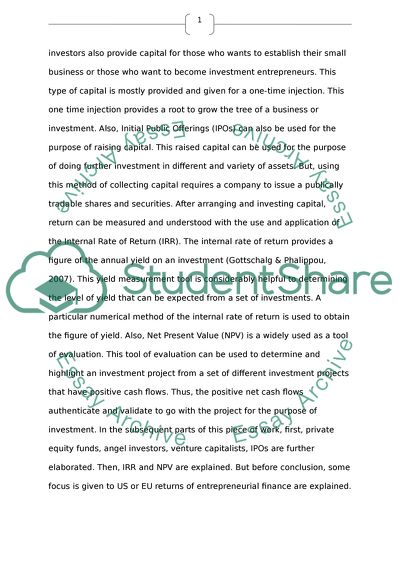Cite this document
(Risk of Entrepreneurial Investments Term Paper Example | Topics and Well Written Essays - 2000 words - 1, n.d.)
Risk of Entrepreneurial Investments Term Paper Example | Topics and Well Written Essays - 2000 words - 1. https://studentshare.org/finance-accounting/1749789-risk-and-return-of-entrepreneurial-investments
Risk of Entrepreneurial Investments Term Paper Example | Topics and Well Written Essays - 2000 words - 1. https://studentshare.org/finance-accounting/1749789-risk-and-return-of-entrepreneurial-investments
(Risk of Entrepreneurial Investments Term Paper Example | Topics and Well Written Essays - 2000 Words - 1)
Risk of Entrepreneurial Investments Term Paper Example | Topics and Well Written Essays - 2000 Words - 1. https://studentshare.org/finance-accounting/1749789-risk-and-return-of-entrepreneurial-investments.
Risk of Entrepreneurial Investments Term Paper Example | Topics and Well Written Essays - 2000 Words - 1. https://studentshare.org/finance-accounting/1749789-risk-and-return-of-entrepreneurial-investments.
“Risk of Entrepreneurial Investments Term Paper Example | Topics and Well Written Essays - 2000 Words - 1”. https://studentshare.org/finance-accounting/1749789-risk-and-return-of-entrepreneurial-investments.


